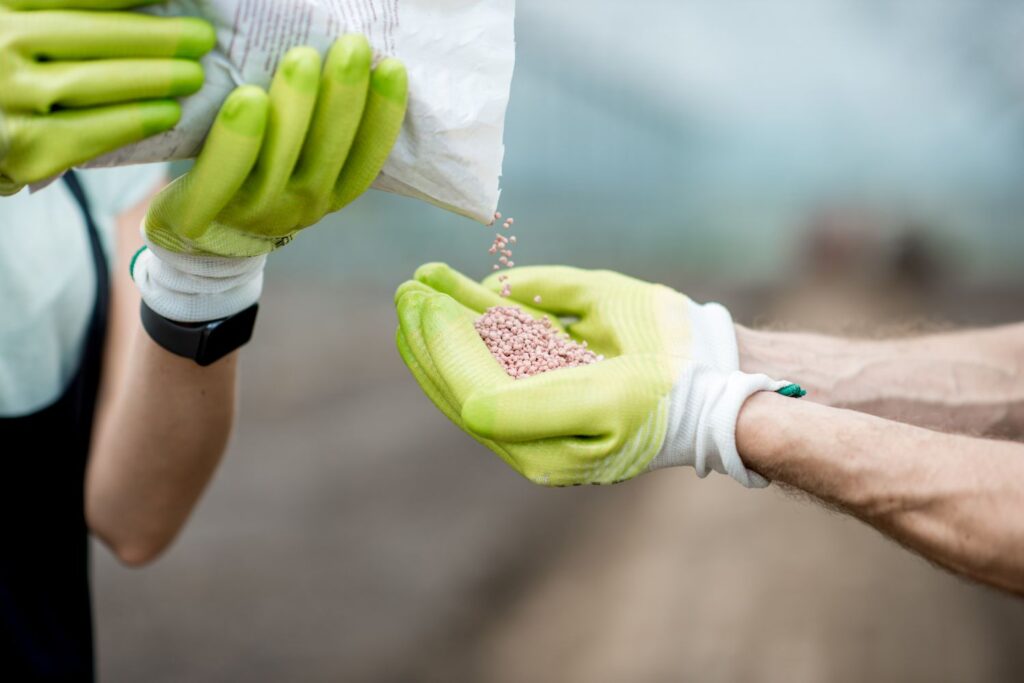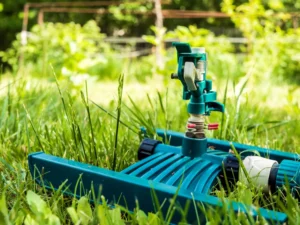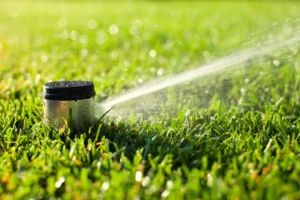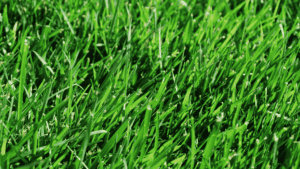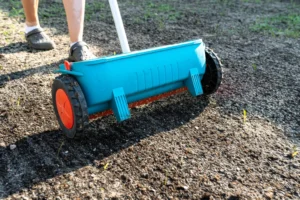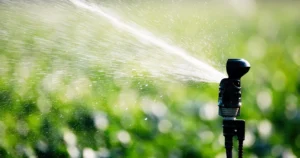When it comes to maintaining a lush, vibrant lawn in Georgia, the type of fertilizer you choose can significantly impact the health and appearance of your grass. Two primary types dominate the market: slow-release and quick-release fertilizers. At WeedPro, we’ve made it our mission to help Georgia homeowners understand these options and choose the one that best supports long-term lawn health and resilience. In this guide, you’ll learn how each fertilizer type works, their unique benefits, and the best application practices to ensure your lawn thrives year-round.
Selecting the right fertilizer—whether slow-release or quick-release—is essential for aligning with Georgia’s climate and maximizing nutrient efficiency, helping your lawn stay green, strong, and healthy through every season.
Understanding Fertilizer Types
Fertilizers play a critical role in enriching the soil and providing essential nutrients for grass growth. They are developed to improve plant nutrition by enhancing growth, root development, and overall lawn health. Knowing the differences between slow-release and quick-release fertilizers can help you choose the best option for your Georgia lawn.
What Are Slow Release Fertilizers?
Slow-release fertilizers are designed to provide nutrients gradually over an extended period, usually several weeks or months. These fertilizers often consist of organic compounds or coated granules that break down slowly, releasing nutrients as the soil conditions permit. Soil microbes and other microbial organisms play a crucial role in breaking down organic materials and protein materials in slow-release fertilizers, facilitating nutrient release. Common examples include sulfur-coated urea and organic sources like compost or manure. Other slow-release fertilizers include urea formaldehyde, ammonium phosphate, and synthetic fertilizers, which use different chemical forms to control nutrient availability.
Benefits of Slow Release Fertilizers
Reduced Risk of Lawn Burn: Slow-release fertilizers have a lower salt index, minimizing the chance of burning your lawn.
Long-Lasting Effects: They require fewer applications, typically providing nutrition for three to six months.
Steady Growth: With their gradual nutrient release, these fertilizers promote consistent grass growth and stronger root systems, leading to increased resilience in hot and humid conditions.
Environmental Advantages: They reduce the risk of nutrient runoff, protecting local water sources from pollution.
Improved Nutrient Use Efficiency: Slow-release fertilizers enhance nutrient use efficiency by minimizing nutrient losses such as leaching and runoff.
Their release characteristics, including a slower release rate, help release nutrients gradually over time. This supports more uniform growth, reduces nutrient loss, and ensures nutrients are available when plants need them most.
What Are Quick Release Fertilizers?
Quick-release fertilizers offer an immediate and concentrated nutrient supply, typically composed of highly soluble synthetic salts. These fertilizers are highly water soluble, providing readily available nutrients for an immediate boost to your lawn. Common examples include ammonium nitrate and potassium chloride, which deliver nutrients quickly to the lawn. They dissolve rapidly in water and are mainly sold in liquid or fine granular forms. This type of fertilizer is particularly useful when lawns need a quick boost of nutrients.
Benefits of Quick Release Fertilizers
Immediate Green-Up: You’ll notice a rapid growth response after application, making them ideal for instant results.
Effective for Addressing Deficiencies: If your lawn is struggling or lacks nutrients, quick-release fertilizers can provide the necessary relief.
Cost-Effective Initially: Though may require more frequent applications, quick-release fertilizers often have a lower upfront cost than their slow-release counterparts.
Caution Against Overapplication: Applying too much fertilizer, especially with conventional fertilizers, can result in nutrient loss through leaching or runoff, potentially harming your lawn and the environment.
Comparing Nutrient Release Patterns
Understanding how each type of fertilizer delivers nutrients can aid in making the right choice for your lawn’s health.
Property | Slow-Release | Quick-Release |
|---|---|---|
Nutrient Delivery | Gradual | Immediate |
Application Frequency | Low (3-6 months) | High (2-4 weeks) |
Burn Risk | Low | High |
Environmental Leaching | Low | High |
Lawn Growth | Even | Quick, sometimes excessive |
Controlled release fertilizers (also known as release fertilizers) use semi-permeable coatings and slow hydrolysis to regulate how nutrients are released into the soil. This controlled release mechanism provides a more predictable and sustained supply of nutrients compared to other chemical forms. Controlled release fertilizer technology is specifically designed to match nutrient release with plant needs, reducing nutrient losses and improving overall efficiency.
Factors Influencing Fertilizer Choice in Georgia
When it comes to fertilization strategies in Georgia, a few local factors can guide your decisions:
Before making any fertilizer applications, it is essential to have your soil tested to identify nutrient deficiencies and select the right products. Incorporating soil test results into your lawn care routine ensures that fertilizer applications are well-timed and tailored to your lawn’s needs, supporting both healthy growth and environmental responsibility.
Soil Type and Nutrient Needs
Georgia has diverse soil types, often ranging from sandy to clay. Sandy soils drain quickly, causing nutrients to leach away, so opting for slow-release fertilizers can be beneficial more often. Moisture conditions and soil moisture levels also play a crucial role in how nutrients are retained and released, directly influencing the effectiveness of different fertilizers and guiding your choice. Conducting soil tests regularly can help you identify nutrient deficiencies and tailor your fertilization plan accordingly.
Climate Considerations
The hot and humid climate of Georgia can exacerbate the risk of nutrient runoff, especially with quick-release fertilizers. Heavy rainfall can wash away these nutrients before your grass has a chance to use them. Soil temperature also plays a key role in how quickly nutrients are released; quick-release fertilizers are often applied in early spring to encourage rapid green-up, while slow-release options are ideal for fall fertilization, providing steady nutrients and supporting root development during the cooler months. Hence, slow-release options might be preferable during the wet seasons to combat potential leaching and runoff.
Plant Types and Growth Stages
Georgia is home to many warm-season grasses like Bermuda and Zoysia, thriving particularly well with steady feeding. Nurturing these grasses typically requires consistent nutrient supply, making slow-release fertilizers a wise choice. Cool season grass varieties, such as Kentucky bluegrass, also benefit from slow-release fertilizers, especially during their peak growth periods. But, quick-release fertilizers can play an important role when establishing new lawns or revitalizing stressed areas.
Matching fertilizer type to plant nutrient requirements and optimizing plant uptake is essential for successful crop production and healthy lawns.
Best Practices for Using Fertilizers in Georgia Lawns
Choosing the right lawn fertilizer is essential for achieving a healthy lawn, as it ensures your grass receives the nutrients it needs for optimal growth.
To effectively use fertilizers specific to Georgia’s conditions, consider the following best practices:
Healthy lawns thrive when you combine proper fertilization with regular mowing and effective weed control.
Application Techniques
For granular formulations, apply evenly across the lawn to avoid clumping, and be sure to water them in well after application. Liquid forms are absorbed quickly, but take care to avoid direct exposure to grass roots to prevent burning.
Areas of the lawn that experience heavy foot traffic may benefit from quick-release fertilizers, as these can support rapid recovery and help restore turf health more efficiently.
Timing and Frequency of Application
Apply fertilizers according to your grass’s growth cycles and local soil temperatures. Slow-release fertilizers are typically applied less frequently, while quick-release products may require more frequent, smaller doses. Generally, a cyclical feeding approach tailored to your lawn’s needs works best.
Conclusion
Choosing between slow-release and quick-release fertilizers eventually depends on your lawn’s unique conditions and requirements. In Georgia, where climate and soil vary, understanding the strengths of each type can lead to better lawn health. For a well-maintained and resilient lawn, consider consulting the experts at WeedPro, who can help you determine the right fertilization strategy tailored to your specific lawn needs.
Frequently Asked Questions
What is the difference between slow release and quick release fertilizers?
Slow release fertilizers gradually provide nutrients over weeks or months, while quick release fertilizers deliver immediate nutrients for fast results. This distinction affects application frequency and lawn health.
How often should I apply slow release fertilizers to my Georgia lawn?
In Georgia, slow release fertilizers should typically be applied every 3 to 6 months, ensuring steady nutrient supply while reducing the risk of lawn burn.
Can quick release fertilizers harm my lawn?
Yes, quick release fertilizers have a higher burn risk due to their concentrated nutrients. They can provide instant green-up but should be used carefully to avoid damage.
What are the best practices for applying fertilizers in Georgia?
For Georgia lawns, apply fertilizers evenly, water them in well, and adjust application timing based on local soil temperatures and grass growth cycles for optimal results.
When should I use slow release fertilizers over quick release options?
Use slow release fertilizers during wet seasons in Georgia to prevent nutrient runoff, while quick release options are ideal for addressing urgent nutrient deficiencies.
What soil types in Georgia benefit more from slow release fertilizers?
Sandy soils in Georgia, which drain quickly and risk nutrient leaching, benefit more from slow release fertilizers, helping retain essential nutrients over time.

